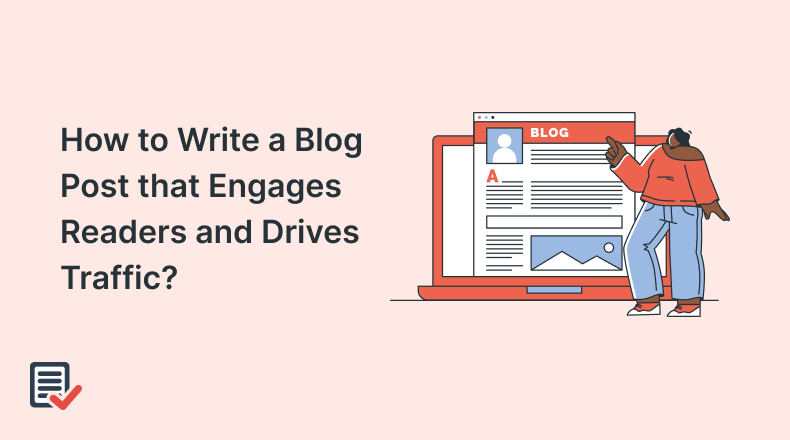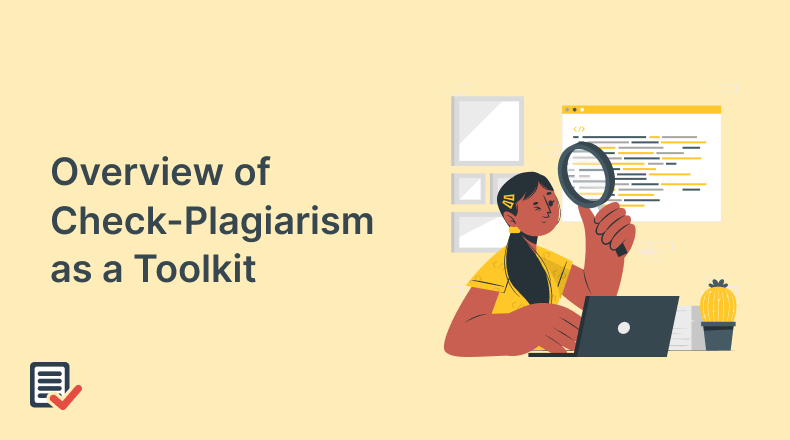
Have you ever experienced that feeling when you spend hours writing a perfect blog, but in the end, all your efforts go in vain?
Why?
Because it didn’t attract any traffic or customer engagement.
In my opinion, anyone can write a blog. But, not all of them can get their content ranked and obtain the ideal traffic. Only those who follow the right strategies can beat the competition and stand out in the eyes of the audience.
Although there is nothing like a perfect blog, there are still some writing strategies that you can adapt to write an engaging blog post that not only engages the readers but also drives good traffic. Let’s get started!
Roadmap To Write a Compelling Blog Post
The following strategies will help you write a high-quality blog post that will engage readers and drive more traffic to your website.
1. Understand Your Targeted Audience
Even before you decide what you want to write, first, determine whom you want to write. Understand your targeted audience first to better resonate with their mindset and needs. Consequently, this approach helps you make a stronger connection with your customers.
For instance, if your target audience shows an interest in traveling, then you will write travel guides, hotel reviews, and travel tips for them. So, in simpler words, when you know your audience and their pain points, you can create content that grabs their attention and gets you the most clicks.
2. Create Unique Headlines
Your headline is the first interaction between you and the visitor. Therefore, it should be enticing enough to convince them to open your blog instantly.
So, the question is: which type of headline is the best?
Well, there are no general criteria or patterns, but a good headline is one that accurately reflects the intent of your blog. It must be descriptive, attention-grabbing, and engaging.
Moreover, it has to be short, to the point, and comprehensive at the same time. Just think it yourself: if a blog’s headline is boring, lackluster, and uninteresting, will you open it? Won’t it signal you that the blog is unoptimized or just simply lacks the effort?
For example, there are two headlines.
Best Travel Tips for First-Time Backpackers
Don’t Make These 9 Mistakes on Your First Backpacking Trip—Here’s What I Wish I’d Known!
Which one would you prefer? For me, the second one is undoubtedly more attention-grabbing.
So, take the time to craft a headline that will entice your readers and encourage them to learn more about what you have to say.
3. Write High-Quality & Engaging Content
Producing high-quality content is no longer just about how well-written your blog is; now, it’s more about how engaging and valuable it is for your readers.
Whether it resonates with their interests and needs or not. Therefore, your blog has to be well-written, well-structured, comprehensive, and relatable to meet up with the current ranking criteria.
For this, whenever you write something, ask yourself questions like, “What would my reader want to know about this topic? How can I make this information interesting and valuable to them?” Structure it the way your readers will like it.
Pro Tip: In my opinion, the best way to generate traffic-driving and engaging content is by incorporating humor, personal anecdotes, and queries in your content.
4. Optimize Your Content For SEO
No matter how well-written your content is, if it is not optimized properly—according to SEO standards, then it can’t rank higher. So, whenever you write something, optimize it as per the SEO guidelines.
Now you must be wondering; how do you optimize your content to fit in the SEO standards?
Well, there are a few factors that you need to consider. Begin with keyword research. Choose relevant keywords that align best with your topic and include them in your content, headings, subheadings, URLs, and in the meta titles & descriptions.
5. Make it Error-Free
Grammatical mistakes can put your blog’s credibility at stake. Even if you have presented outstanding ideas, your blog post will fail to engage readers if it contains any punctuation, typos, or syntax errors. Therefore, before you publish any post, make sure to thoroughly proofread it and eliminate all grammatical mistakes. As a result, your content will sound more reliable and trustworthy and will seem like it was written by a professional.
6. Ensure Originality
Readers love to listen to your unique and fresh ideas, not the same overused ones they’ve seen everywhere else. Therefore, whenever you write something, think of different perspectives to showcase your argument.
Brainstorm new angles on your topic and focus on adding your own insights to your blogs. Don’t ever rely on copying others. It is fine to take inspiration from different resources, but your content should have its own essence.
Remember, originality isn’t just about avoiding plagiarism; it’s about creating something valuable and authentic that resonates with your audience.
Thus, whenever you write something, make sure to check its plagiarism to avoid any unintentional duplication. The best way to do this is to seek assistance from a reliable plagiarism checker.
These tools are designed to compare your writing with thousands of other published sources to ensure its authenticity. This not only boosts your credibility but also improves your blog’s chances of ranking higher on search engines.
7. Conclude With a Call to Action
Imagine you wrote a blog post, and your audience reads it. What’s next? Don’t leave them wondering! Guide them with a clear call to action.
You can ask them to leave a comment, share your post on social media, subscribe to your blog newsletter, or visit another page on your website.
For this, you can try different methods rather than simply asking your readers to “leave a comment,” ask them to “share their thoughts,” or “let you know what they think.” This makes your call to action more specific and compelling. Just experiment with different engagement strategies and assess what works best with your audience.
Conclusion:
Writing engaging blog posts requires the implementation of the right strategies. By understanding your audience, creating compelling headlines, delivering valuable content, optimizing for SEO, and including clear calls to action, you can enhance reader engagement and boost your blog’s reach.







